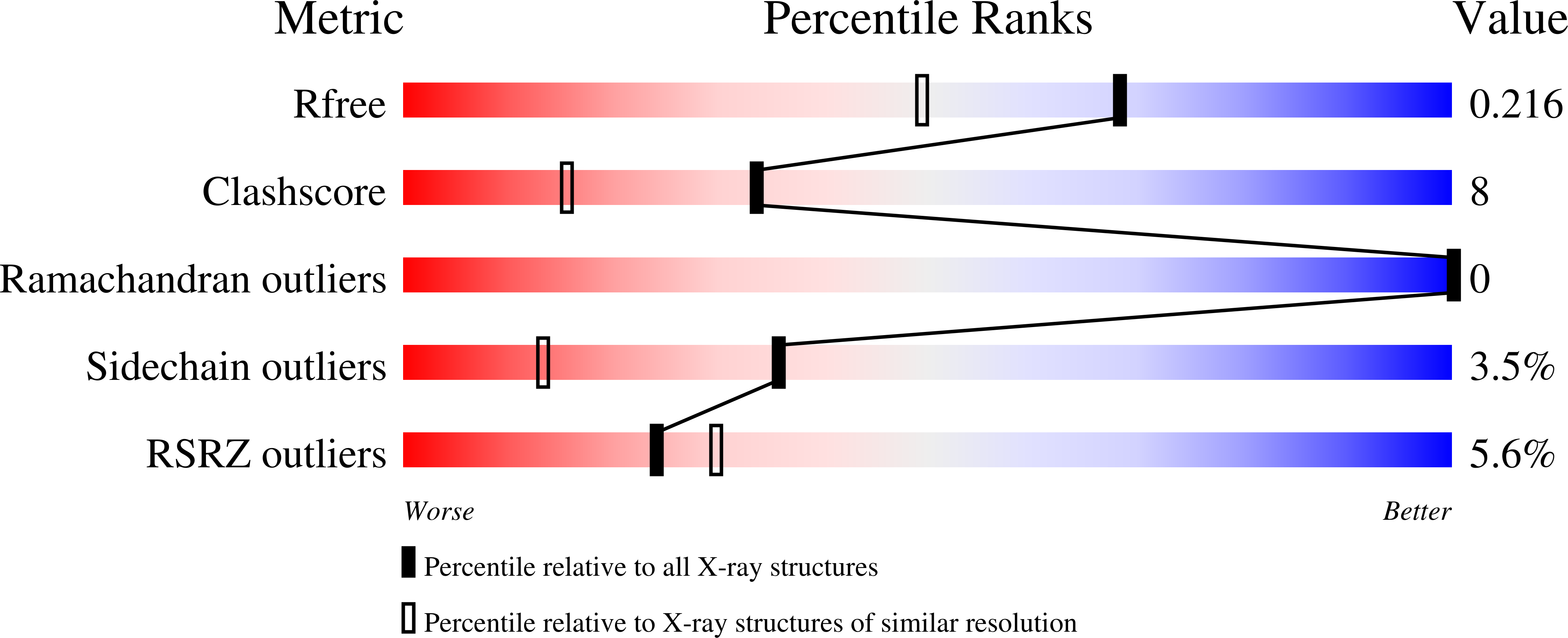Structures of apo and GTP-bound molybdenum cofactor biosynthesis protein MoaC from Thermus thermophilus HB8
Kanaujia, S.P., Jeyakanthan, J., Nakagawa, N., Balasubramaniam, S., Shinkai, A., Kuramitsu, S., Yokoyama, S., Sekar, K.(2010) Acta Crystallogr D Biol Crystallogr 66: 821-833
- PubMed: 20606263
- DOI: https://doi.org/10.1107/S0907444910019074
- Primary Citation of Related Structures:
3JQJ, 3JQK, 3JQM - PubMed Abstract:
The first step in the molybdenum cofactor (Moco) biosynthesis pathway involves the conversion of guanosine triphosphate (GTP) to precursor Z by two proteins (MoaA and MoaC). MoaA belongs to the S-adenosylmethionine-dependent radical enzyme superfamily and is believed to generate protein and/or substrate radicals by reductive cleavage of S-adenosylmethionine using an Fe-S cluster. MoaC has been suggested to catalyze the release of pyrophosphate and the formation of the cyclic phosphate of precursor Z. However, structural evidence showing the binding of a substrate-like molecule to MoaC is not available. Here, apo and GTP-bound crystal structures of MoaC from Thermus thermophilus HB8 are reported. Furthermore, isothermal titration calorimetry experiments have been carried out in order to obtain thermodynamic parameters for the protein-ligand interactions. In addition, molecular-dynamics (MD) simulations have been carried out on the protein-ligand complex of known structure and on models of relevant complexes for which X-ray structures are not available. The biophysical, structural and MD results reveal the residues that are involved in substrate binding and help in speculating upon a possible mechanism.
Organizational Affiliation:
Bioinformatics Centre (Centre of Excellence in Structural Biology and Bio-computing), Indian Institute of Science, Bangalore, India.
















